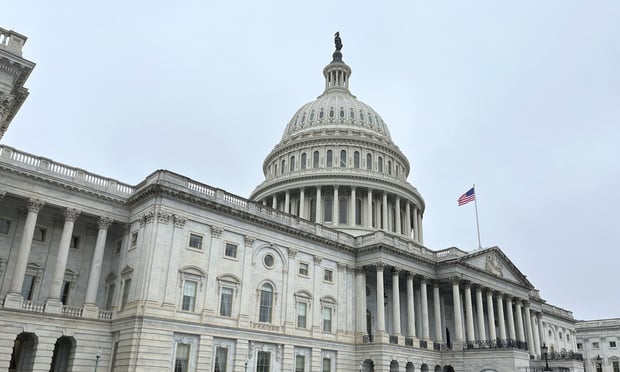Over the last 12 months, the U.S. Department of Labor and the Securities and Exchange Commission proposed several rules, regulations and legislation that will soon change retirement planning for all—investment companies, employers and investors. Of all the recently issued regulations, those concerning 401(k) fee disclosures have been the most talked about.
In sum, the DOL issued final regulations that will soon require investment companies to disclose the hidden fees they are charging investors participating in 401(k) plans and other defined contribution plans. This new regulation will require plan providers to report to investors, typically the employees of plan sponsors, the direct and indirect compensation received in connection with account services and take effect July 16.
We’ve heard a lot of talk from politicians and lawyers about how great the new regulations will be to investors and how it’ll help fix the American retirement system. And while the disclosure of 401(k) fees will provide consumers with honest options and the push toward transparency is a wonderful concept, consumers will ultimately pay since unfortunately, they always do. So let’s look at what these regulations mean and what’s at stake for the investor, the plan sponsor and the investment company.
What does this mean?
To the investor: Before, 401(k) fees have been largely hidden. However now, a result of this new regulation, all fees, including recordkeeping, administration, brokerage and another eight possible indirect charges, will now be exposed on investors’ statements—making 401(k) plans entirely transparent to consumers.
The regulation will provide uniform disclosure to workers about what they pay for investment options in their retirement plans, according to the DOL. To the plan sponsor: The new rules will require 401(k) plan sponsors to stay informed on behalf of their employees.
Since often times the financial executives at organizations also wear the hat of a fiduciary, it becomes their concern, too, as to how employees plan for their retirement future. Since these fees will now be available, plan sponsors should expect inquiries from participants and will need to decide how to, if at all, introduce the new fee disclosure to their employees, as seen in their 401(k) plans.
To the investment company: Investment companies must now provide detailed fee disclosures directly to plan sponsors. They will now need to be mindful in regards to the fees they’re charging investors and they will now be forced to justify the fees they’re charging. A barrage of proposed or finalized regulation hammered the nation’s retirement system in 2010.
Over the last year, the U.S. Department of Labor and the Securities and Exchange Commission have proposed or finalized a handful of laws and enforcement initiatives while Congress passed major legislation that, taken together, already are changing the world of investments and retirement planning.
What’s at stake?
To the investor: Prior to the regulation, employees had to do their homework and find out about hidden fees they were being charged. Sometimes that information was provided and sometimes it wasn’t. Regardless, most folks didn’t know and didn’t care. The government has now stepped in on their behalf to provide transparency to the 401(k) system.
With 401(k) fees to now be disclosed, it’ll be more important for the investor to investigate their monthly statements and see if the charges make sense, are too high, etc. It’ll now be the job of the investor to educate themselves and get smart quick on their plans. Investors should now know the fees they’re being charged.
They should compare them to others’ provider fees, shop around and ask questions. It’s important to understand your rights as a 401(k) participant and know what you’re paying for. Ultimately, the fee issue came into focus after multiple lawsuits alleging that employers failed to ensure that workers were paying reasonable 401(k) fees.
Now, lawsuits might erupt between workers and investment companies. Over time, what may actually happen, as a result of those lawsuits, is that investors will inevitably bear the cost. Lawsuits are bound to ensue. Beware of the burden: avoid them.
To the plan sponsor: According to a 2007 AARP study, 65 percent of U.S. employees believed they paid no fees and 18 percent were uncertain. They cost money to maintain. Someone is doing all of the back office work from administration, to investment allocation and more. Once consumers finally see how much they’re being charged for a so-called employee ‘benefit,’ many might be in an uproar as to how much they’re being charged.
Employees will have questions and employers will have to answer. It’s imperative for plan sponsors to take this opportunity to shop around with clearer knowledge of the services they plan on providing their benefits and how much it will cost both themselves as the employer and their employees.
As much as investment companies are expected to be transparent under the new regulations, it’s just as important for plan sponsors to follow that same ethical model with their employees. Effectively communicating and understanding are key responsibilities. To the investment company: Companies providing those 401(k) plans will now have to justify the fees they’re charging investors.
They’ll have to think a bit harder as to how to minimize all of the administrative work and all other fee associated labor. Odds are they’ll be forced into minimizing those fees to stay more competitive and become more desirable to plan sponsors. Some investment companies are being smart. They’re already disclosing 401(k) fees in hopes to gain market share and stay on top of the game.
Complete your profile to continue reading and get FREE access to BenefitsPRO, part of your ALM digital membership.
Your access to unlimited BenefitsPRO content isn’t changing.
Once you are an ALM digital member, you’ll receive:
- Breaking benefits news and analysis, on-site and via our newsletters and custom alerts
- Educational webcasts, white papers, and ebooks from industry thought leaders
- Critical converage of the property casualty insurance and financial advisory markets on our other ALM sites, PropertyCasualty360 and ThinkAdvisor
Already have an account? Sign In Now
© 2024 ALM Global, LLC, All Rights Reserved. Request academic re-use from www.copyright.com. All other uses, submit a request to [email protected]. For more information visit Asset & Logo Licensing.








